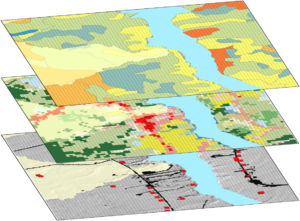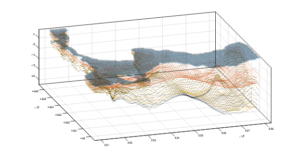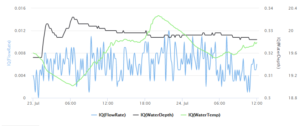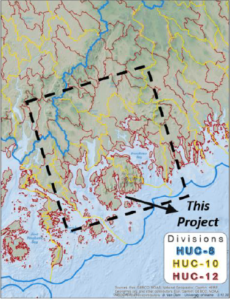Coastal Pollution
River systems are transporters of fresh water, sediment, nutrients, bacteria, micro-plastics, and other pollutants that are washed from the landscape and carried downstream to coastal estuaries. Some of the pollutants can cause public health problems, create ecological impairments, necessitate closure of shellfishing areas, cause algal blooms that can harm humans and wildlife, and affect coastal communities. In order to manage pollution causes and develop solutions to related problems, it is important to develop and understanding of how and why some coastal areas show more vulnerability to pollution than others.
WPES members are involved in interdisciplinary research involving biology, hydrology, hydrodynamics, and sociology with a goal of developing better prediction and decision support tools for coastal pollution management. The research is primarily conducted at both the Gulf of Maine and “reference” estuary-watershed scales.
If you would like to hear about WPES land – sea connection research related to coastal pollution problems in Maine, an overview is provided in a SEMINAR by Drs. Lauren Ross and Sean Smith recorded on October 19, 2020 at the Sen. George J. Mitchell Center for Sustainability Solutions.
Vulnerability Analysis

WPES researchers have undertaken several coast-wide bacteria pollution vulnerability analyses and coastal setting clustering efforts. An outcome of this work includes an automatic watershed-estuary delineation tool designed to help support coastal management decisions in Maine. Click here to learn more!
Freshwater Flows
WPES collaborators are tracking freshwater flow into coastal estuaries using multiple instrumented river input monitoring stations, some of which produce data reported in real time to the the WPES webpage. Recorded flow time series are used to calibrate and validate watershed hydrologic models to predict rainfall runoff, and to provide boundary conditions for estuary hydrodynamic models. Click here to learn more!
Hydrodynamic Modeling 
The WPES team are using multiple hydrodynamic modeling tools to quantify and understand how tidal cycles and freshwater inputs affect estuary flow dynamics linked to pollution transport and residence time. Click here to learn more!


